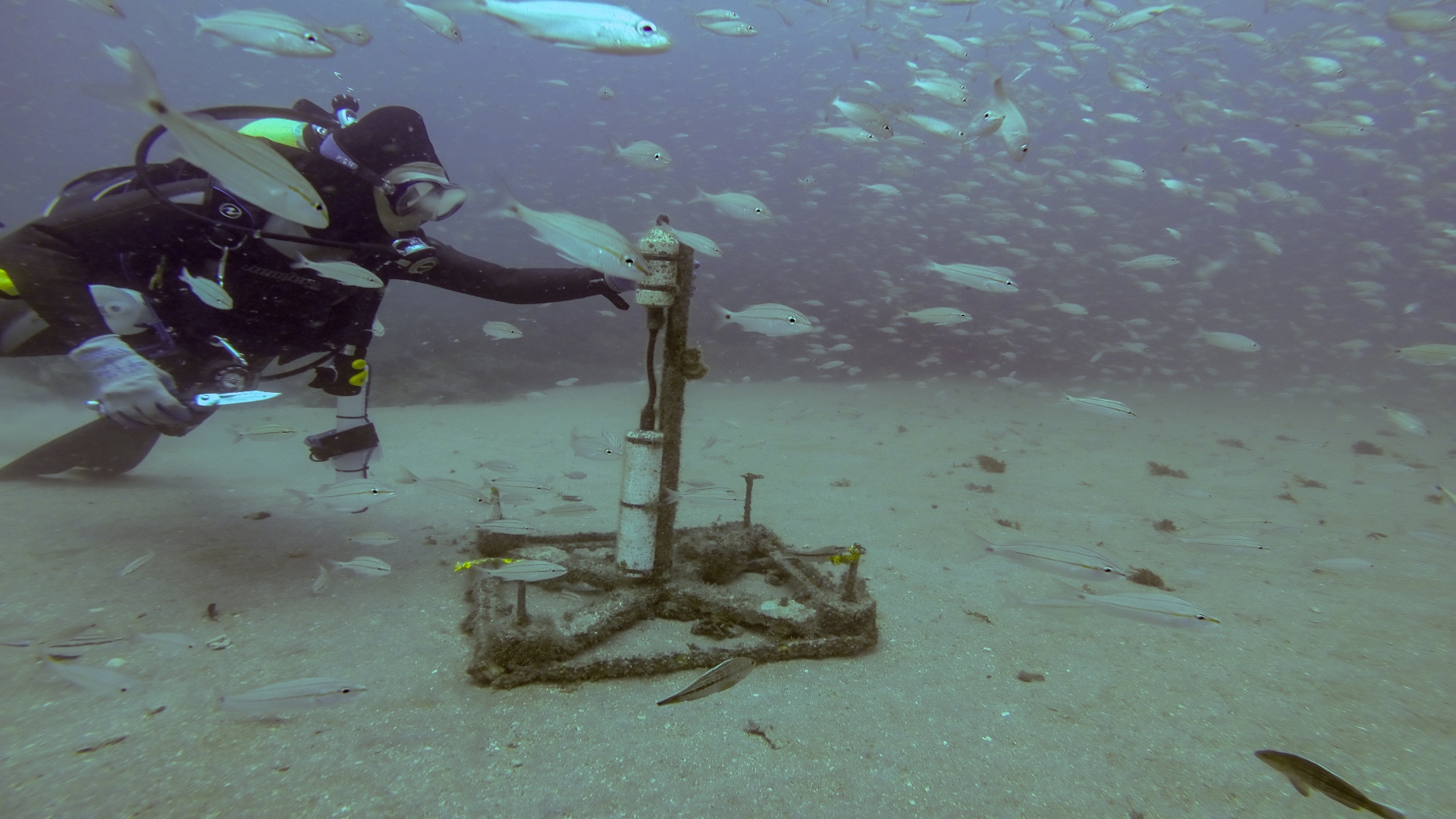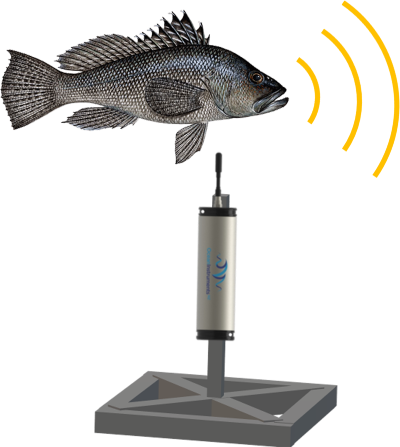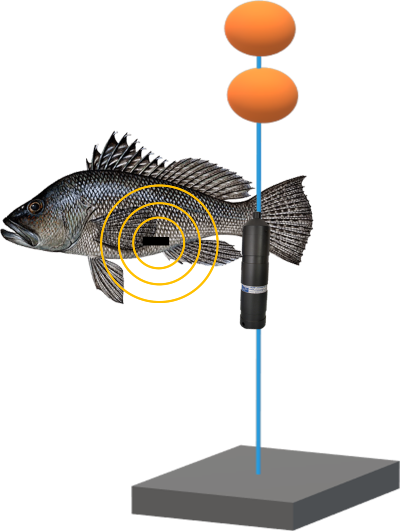
In 2014, NOAA began collecting recordings of ambient and human-caused sounds within Gray's Reef National Marine Sanctuary. Diver-deployed hydrophones were stationed on the seafloor to record reef ocean sounds. These recordings help to identify biological activity and potentially detect changes in the reef health.
Gray's Reef continued this effort in 2018, becoming involved in a NOAA agency-wide approach, known as SanctSound, in which sound recordings were used to compare sanctuary soundscapes among 30 nationally-distributed locations.
Hydrophones act as underwater microphones to record the biotic, abiotic and anthropogenic sounds. Biotic sounds are sounds produced by living things such as invertebrates, fishes and marine mammals. Abiotic sounds are sounds from the physical environment such as rain and waves. Anthropogenic sounds are human-sourced sounds such as passing boats or fish sonars. The chorus of sound at Gray's Reef National Marine Sanctuary changes throughout the year based on water temperatures and migration patterns.
Hydrophones record sounds of marine life underwater. Illustration: Alison Soss/NOAA


Acoustic receivers pick up ‘pings' emitted by internal tags in different fishes that were placed there by researchers. Illustration: Alison Soss/NOAA
This portion of the project uses two pieces of equipment, a transmitter and a receiver. The transmitter is implanted into the fish and emits a unique frequency to identify the tag. The receiver is suspended from the seafloor to pick up the transmitter frequency and logs the date and time the fish swam within range.
Multiple receivers are placed on the seafloor—both in the sanctuary and throughout the Eastern Seaboard—to follow individual fish as they migrate.
Acoustic receivers pick up ‘pings' emitted by internal tags in different fishes that were placed there by researchers. Illustration: Alison Soss/NOAA
Sound is one of many ways that marine animals experience their environments, and one of many ways that we can study the underwater world. Many marine organisms rely upon a variety of natural biotic and abiotic sounds to communicate, navigate, find food, and reproduce. However, as human activity in coastal waters increases, so does the potential to impact marine organisms and their natural functions.
Human-caused sound has the potential to affect animals by causing temporary or permanent hearing loss, causing a stress response, forcing animals to move from their preferred habitat, and disrupting feeding, breeding/spawning, nursing, and communication behaviors.
The impacts may be immediate and severe, or they may accumulate over time depending on the sound source, duration, and location. Because water is denser than air, sound travels faster and farther in the ocean. Some sounds, particularly low-frequency ones, can cover vast distances, even across ocean basins.
Investigating the world of sounds in the marine environment has opened a new dimension of Gray's Reef and other national marine sanctuaries. What we learn by listening in sanctuaries helps us gain a better understanding of the role sound plays in a natural marine environment and the potential effects of human-caused sounds. By knowing how much underwater noise humans produce around the world, scientists can develop ways to reduce or prevent it, as well as ways to protect marine animals from it.